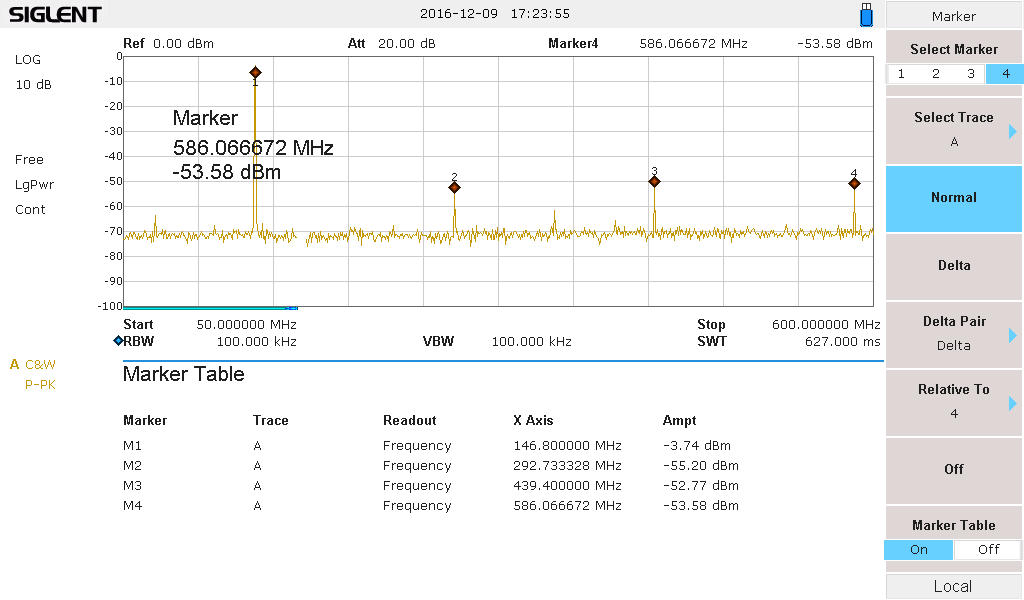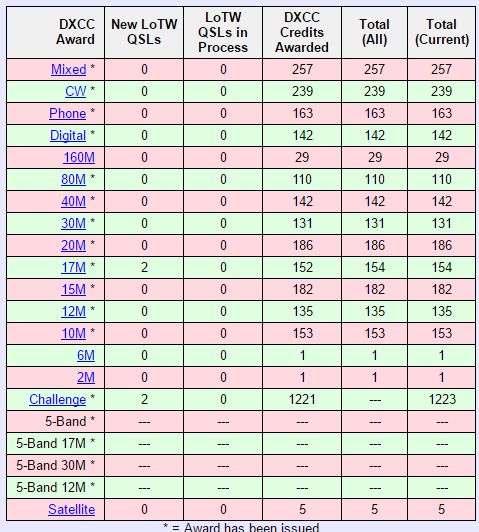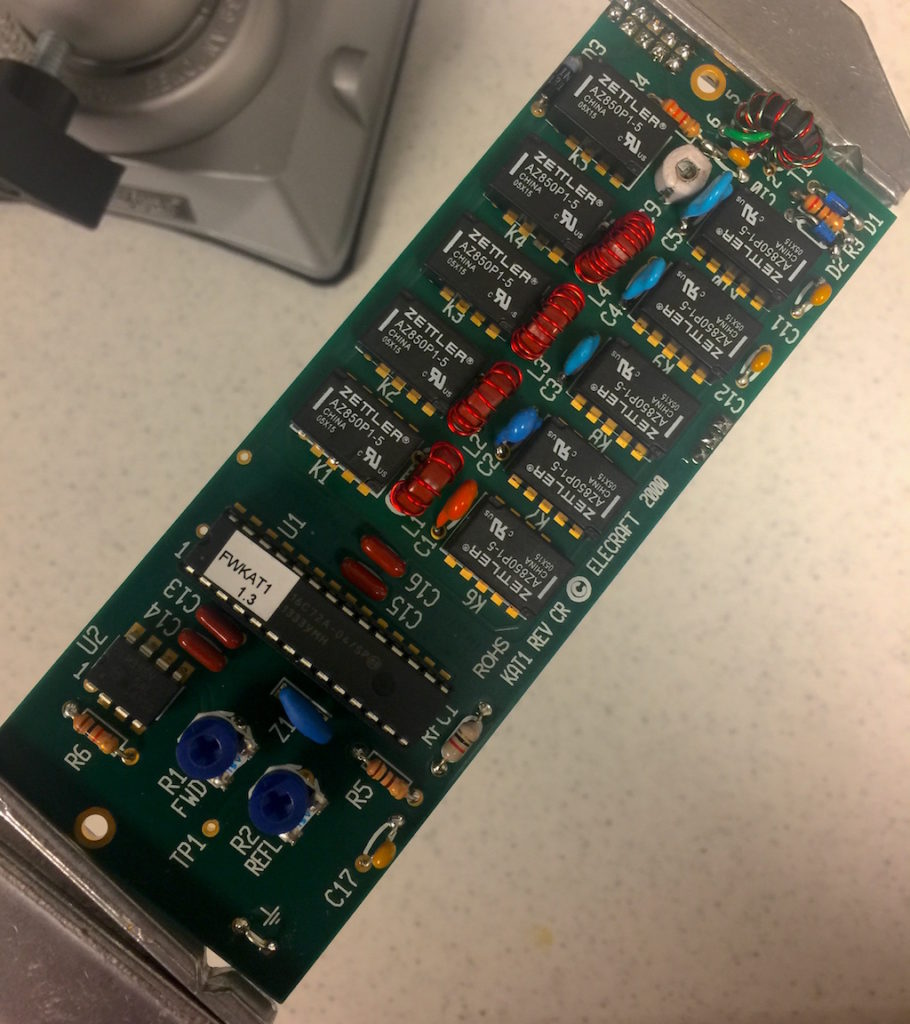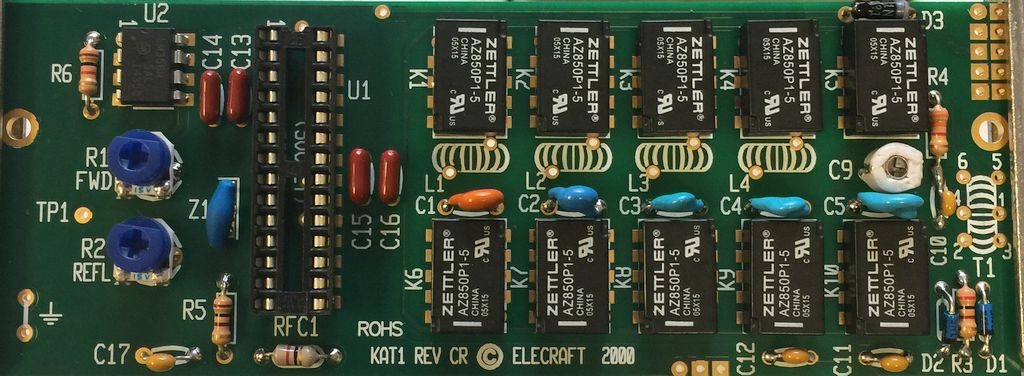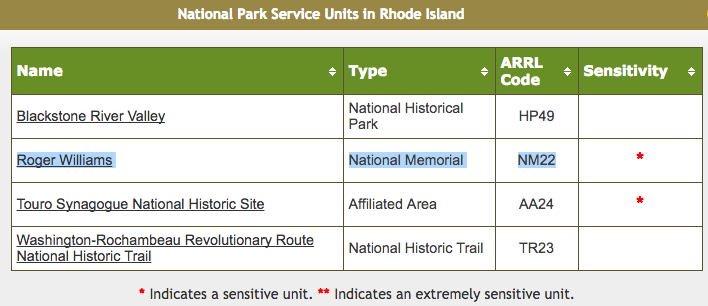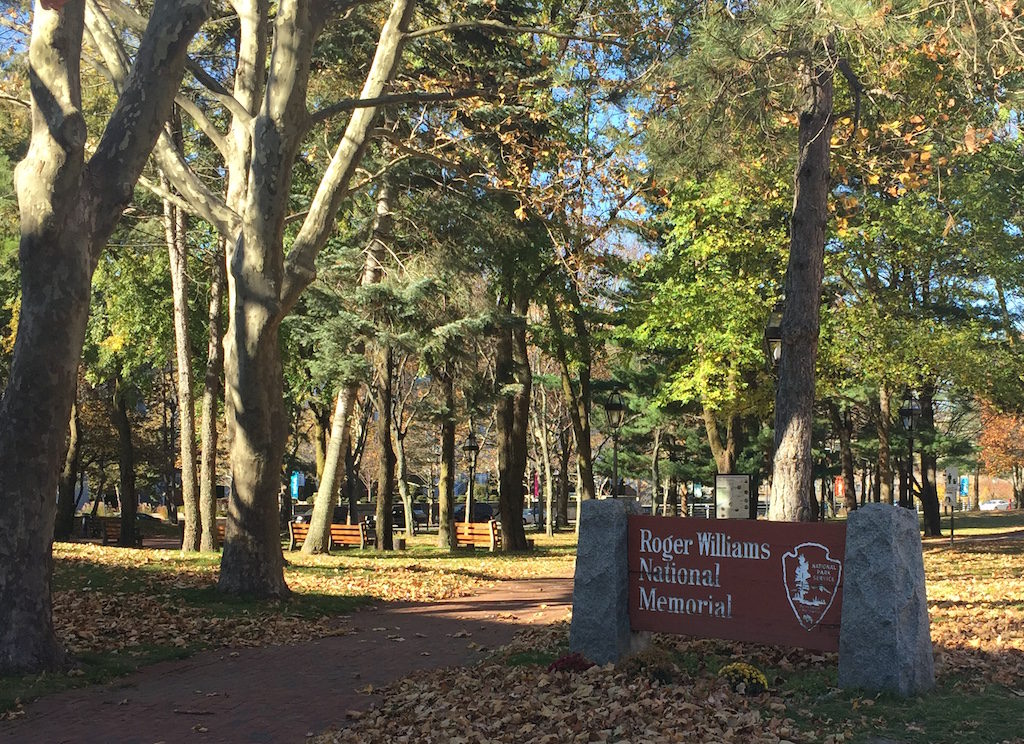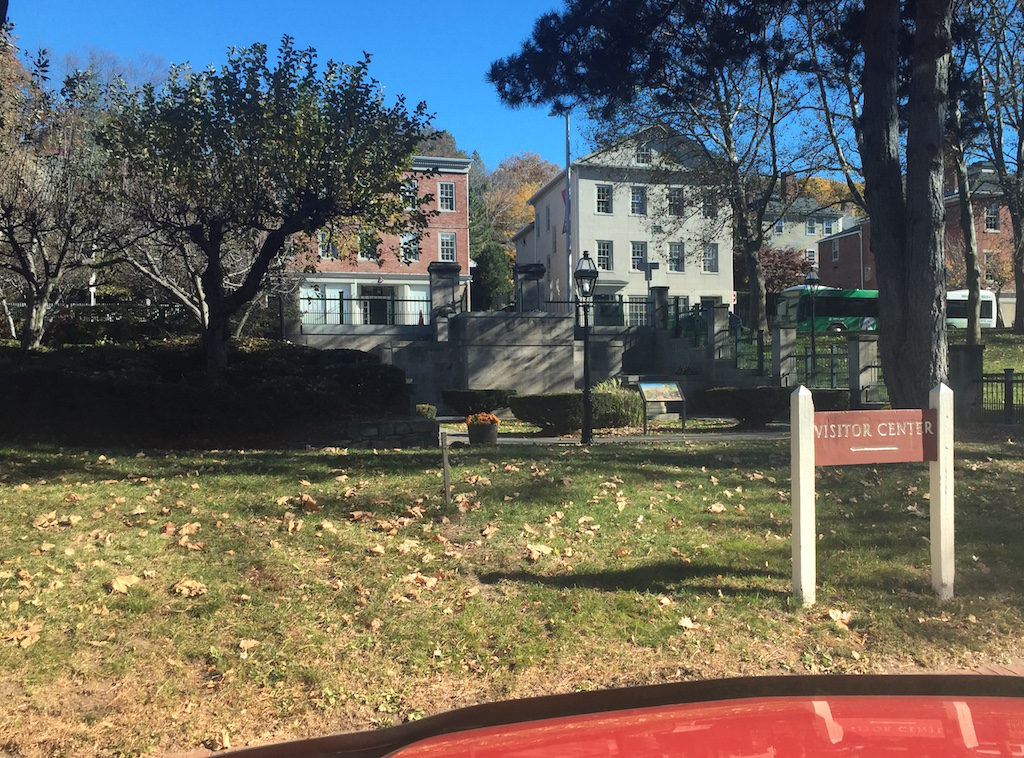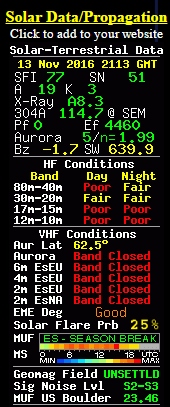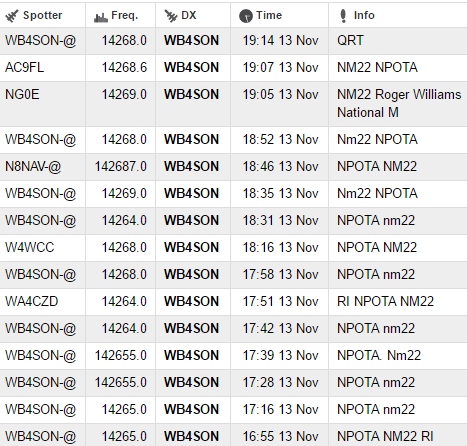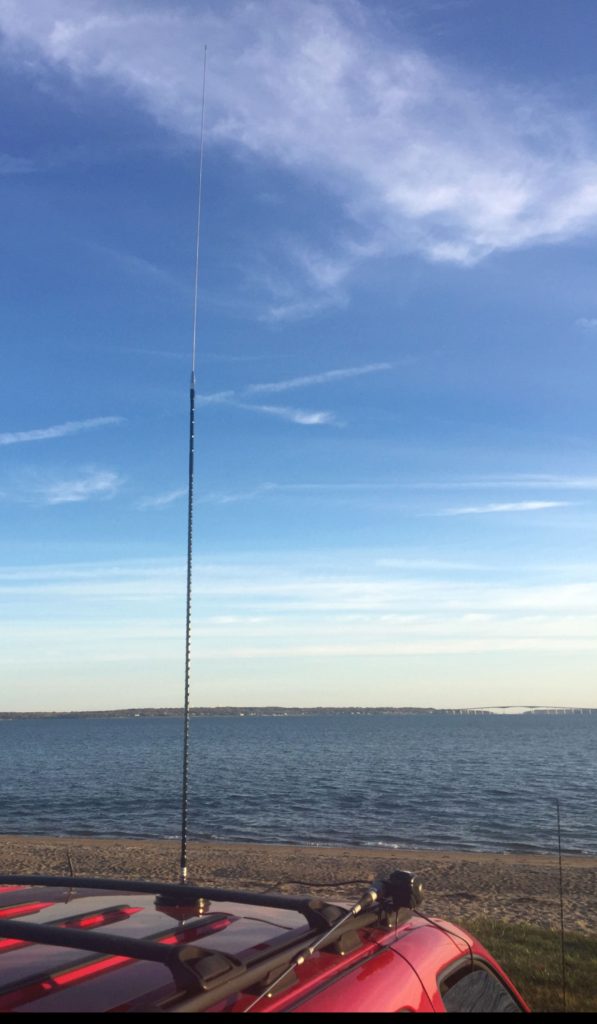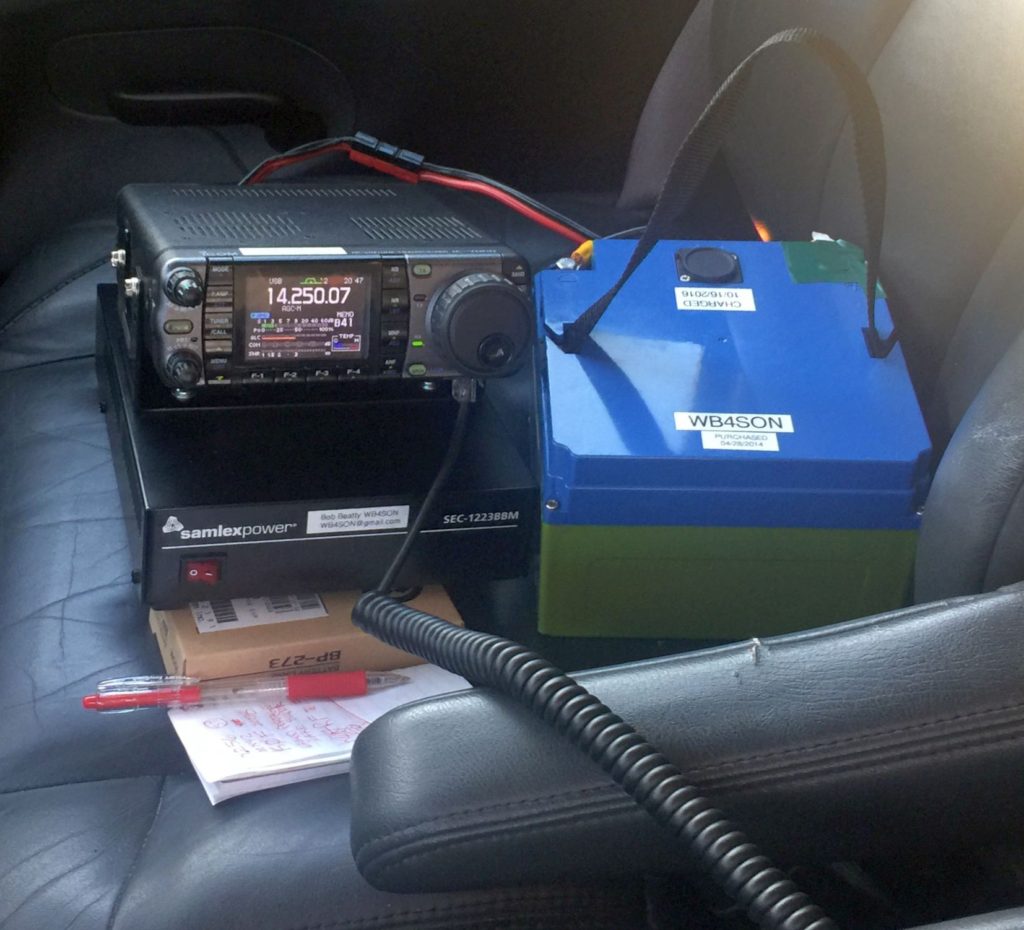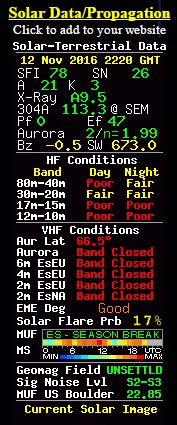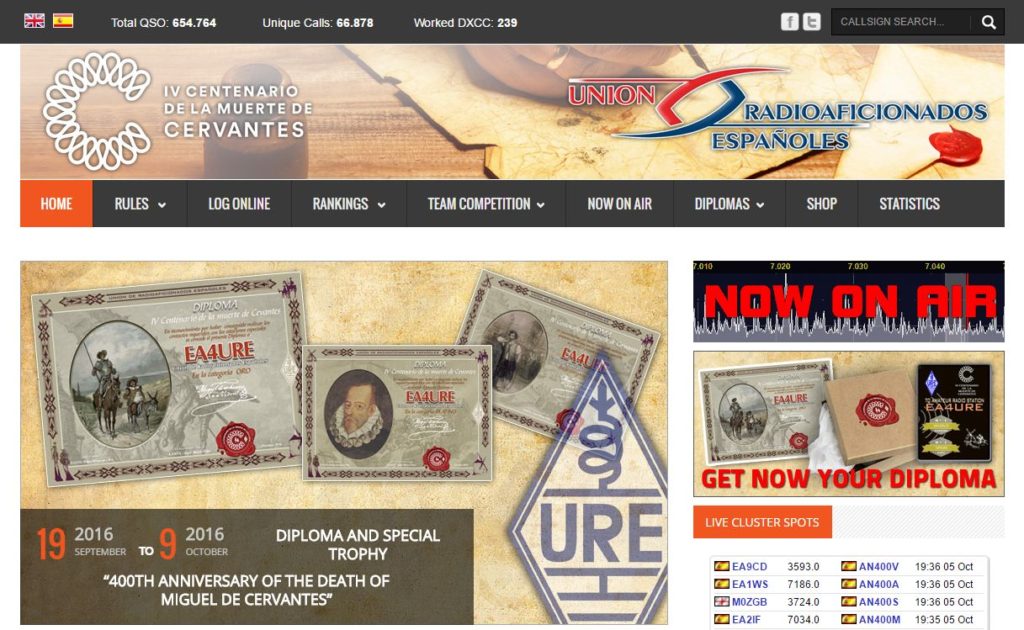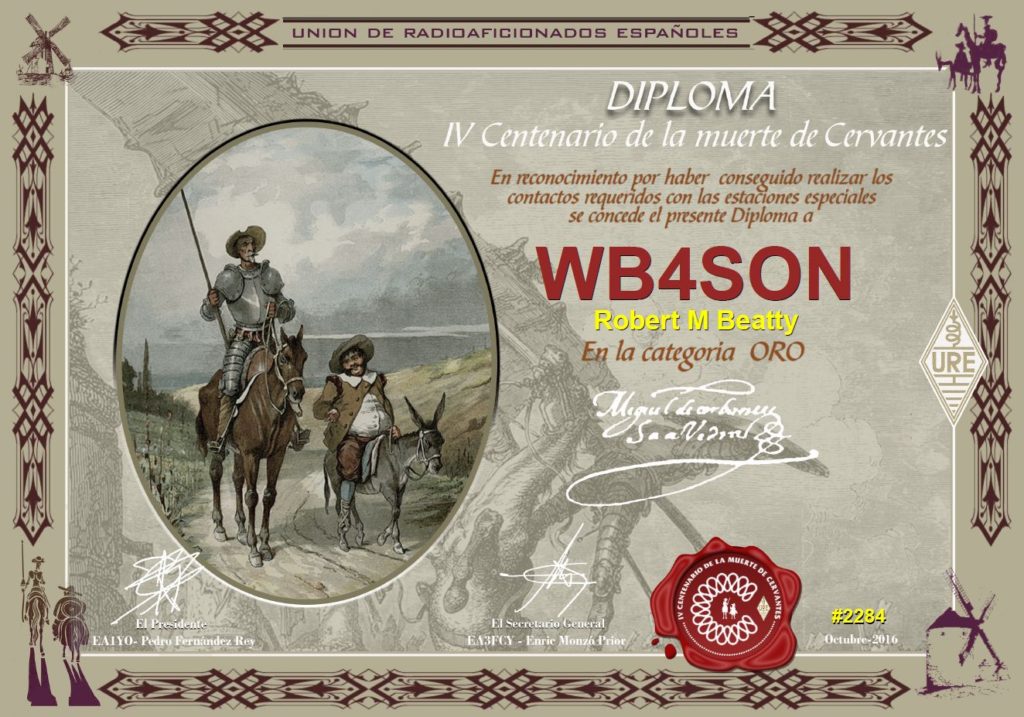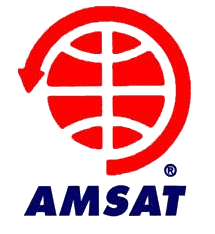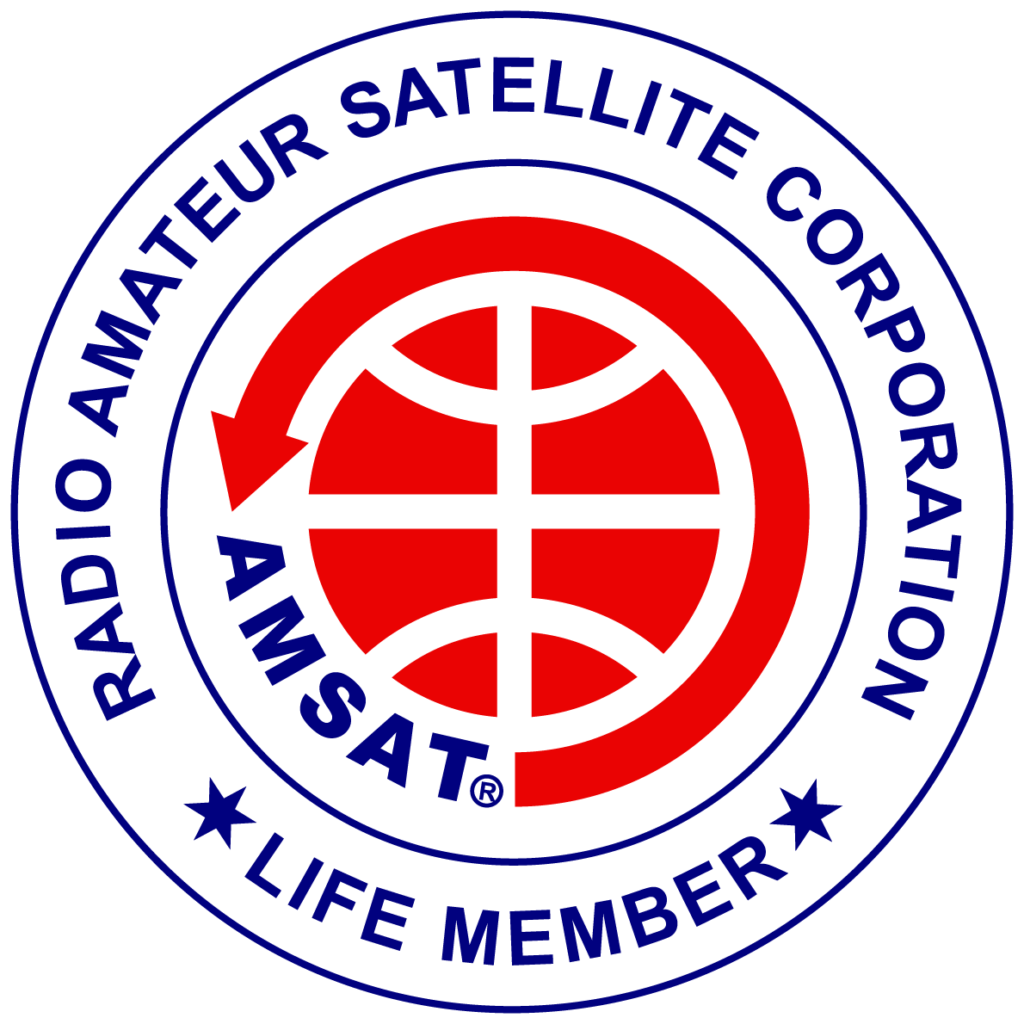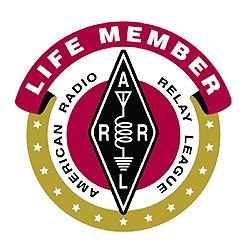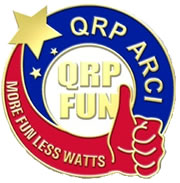I have seen some reports of BaoFeng radios not passing FCC Spurious Emission Standards. I have a old UV5R that is affixed to my Fox Hunting RDF antenna. I re-enabled the transmitter (normally programmed off to avoid accidentally blowing out the active elements of the RX-only RDF antenna) and tested it yesterday.
Executive Summary: My particular UV5R fails the FCC 97.307(d) limit with a worst case spurious emission (3nd harmonic) of 53 µW.
FCC Limit: For a transmitter having a mean power of 25 W or less, the mean power of any spurious emission supplied to the antenna transmission line must not exceed 25 µW and must be at least 40 dB below the mean power of the fundamental emission, but need not be reduced below the power of 10 µW.
Test Setup: UUT feeds a 40 dB Power Attenuator, the output of which is feeding a Siglent SSA3021X Spectrum Analyzer. The SA calibration is valid through November of 2017.
Test Settings: Start Freq 50 MHz, Stop Freq 600 MHz, RBW/VBW 100 KHz. Input Power to SA was 40 – 3.74 dBm, or 36.26 dBm (4.23 watts). Markers placed at fundamental, 2nd, 3rd, 4th harmonic.
Worst Case Spurious Emission: The absolute power is -52.77 dBm + 40 dB = -12.77 dBm = 53 µW, which is a failing level. The relative power is 49 dB below the carrier.
As I mentioned before, my particular UV5R is pretty old, circa 2012. Who know how newer units perform.

